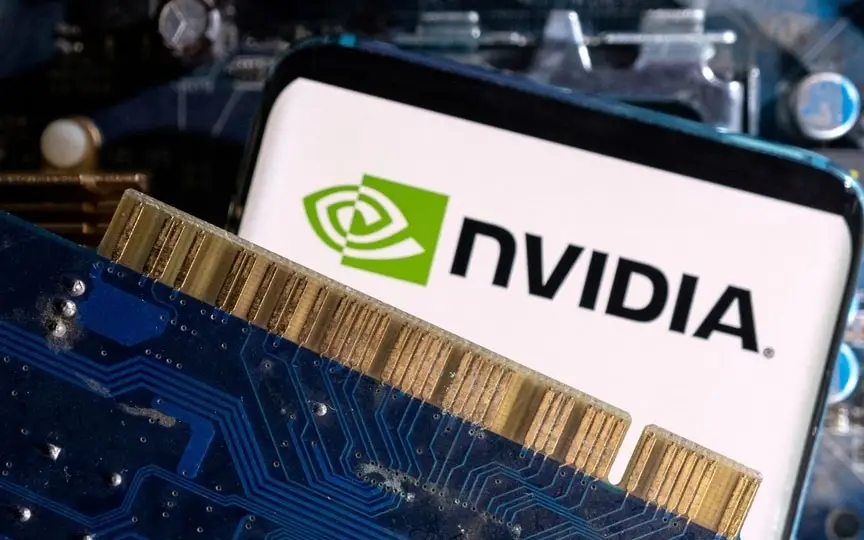Exploring China’s Black Market for Advanced Nvidia AI Processors
In light of the U.S. sanctions, where can a Chinese purchaser acquire high-end Nvidia AI chips?
A visit to the famous Huaqiangbei electronics district in the southern Chinese city of Shenzhen is a good bet – especially the SEG Plaza skyscraper, whose first 10 floors are filled with shops selling everything from camera parts to drones. Chips are not advertised, but discreetly asking works.
They are not cheap. Two vendors there, who spoke to Reuters individually on condition of anonymity, said they could supply small quantities of the A100 AI chips made by the US chip designer and price them at $20,000 each – double the usual price.
While it is not illegal to buy or sell high-quality US chips in China, US export restrictions have created a de facto underground market where sellers are unwilling to face scrutiny from US or Chinese authorities.
In September, President Joe Biden’s administration ordered Nvidia to stop exporting two of its most advanced chips — the A100 and the newly developed H100 — to mainland China and Hong Kong as part of efforts to curb China’s development of artificial intelligence and supercomputers amid rising political and trade tensions. After this, a number of export control measures related to semiconductors were implemented.
But as artificial intelligence grows around the world following the explosive success of OpenAI’s ChatGPT, demand for high-end chips has exploded, especially for Nvidia’s microprocessors, which are widely considered the best at handling machine learning tasks.
“We’re talking to two suppliers now to get them,” said Ivan Lau, founder of Hong Kong’s Pantheon Lab, which is trying to buy two to four new A100 boards to power the startup’s latest AI models.
Those sellers who bought the chips from outside the United States offered 150,000 Hong Kong dollars ($19,150) per card, he said, adding: “They told us straight up that there would be no warranty or support.”
Reuters spoke to 10 sellers in Hong Kong and mainland China who said they could easily source small quantities of the A100s. Their data highlighted both the strong demand for chips in China and the relatively easy circumvention of Washington’s sanctions in small batches.
Reuters was unable to estimate the total volumes of Nvidia A100 and H100 chips flowing into China, or to determine the extent to which the transactions are driving demand.
The buyers are typically app developers, startups, researchers or gamers, the sellers said, not being identifiable because the imports are against U.S. trade restrictions. One seller said local Chinese authorities were also buyers.
In a statement to Reuters, Nvidia said it would not allow the A100 or H100 to be exported to China, instead offering reduced-capacity substitutes that comply with US law.
“If we receive information that the customer is violating the contract with us and exporting restricted products in violation of the law, we will take immediate and appropriate action,” the statement said.
The US Department of Commerce, China’s State Council Information Office and China’s Ministry of Industry did not respond to requests for comment.
Nvidia said in September that it could lose $400 million in third-quarter sales if Chinese companies decided not to buy alternative Nvidia products.
Its new slower versions tailored for China – the A800 and H800 – developed to dampen this effect, are now being bought by big Chinese tech companies such as Tencent Holdings and Alibaba, which have the deep pockets to buy huge quantities.
OFFERS ONLINE
Chinese vendors said they sourced the chips primarily in two ways: by grabbing excess inventory that finds its way into the market after Nvidia ships large quantities to U.S. companies, or by importing through locally incorporated companies such as those in India, Taiwan and Singapore.
This means that the amounts they secure are small, far from what is needed to build a large language model of an advanced AI from scratch.
According to research company TrendForce, a model similar to OpenAI’s GPT would require more than 30,000 Nvidia A100 cards. But a handful can perform complex machine learning tasks and improve existing AI models.
According to one electronics sourcing website, there were about 40 A100 sellers, most of them in the Huaqiangbei electronics district. However, A100 listings can also be found on Alibaba’s Taobao e-commerce site, Xiaohongshu, which is similar to Instagram, and Douyin, the Chinese version of TikTok.
Alibaba, Xiaohongshu and Douyin’s owner ByteDance did not respond to requests for comment.
Some sellers warned that fraud had become more common when refurbished chips were distributed as A100.
Nvidia’s more advanced H100 chips, which have only been on the market since March, seem to be much harder to come by.
Vinci Chow, an economics lecturer at the Chinese University of Hong Kong whose department has obtained four A100 boards from local vendors for research purposes, said he had been told that packages of eight H100 chips were available for purchase. But only one in 10 vendors Reuters spoke to said they could get the H100s.
The U.S. probably isn’t too worried about small chip deals, said Charlie Chai, a Shanghai-based analyst at 86Research.
“Only if/when China poses a greater threat after significant countermeasures will we see stricter enforcement,” he said.
He added that the premiums currently charged by Chinese vendors for the A100 and H100 chips could collapse in the future as many of the Chinese AI companies that drove the purchases eventually pull out of the market.
($1 = 7.8307 Hong Kong dollars)




